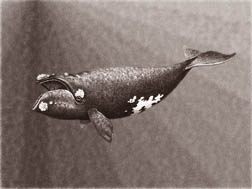
Saving the whales
Thousands of square miles off Alaska have been designated as critical
habitat for North Pacific Right Whales, considered the most endangered
whale in the world.
The federal rule published recently designates some 36,750 square
miles (95,180 square kilometres) in the Bering Sea and Gulf of Alaska as
critical habitat for Right Whales. The rule took effect on August 7.

At least 11,000 of the slow-moving whales -prized by commercial
whalers for their oil and baleen - once swam the waters of the North
Pacific. The whales were listed as endangered in 1973 and they are now
believed to number fewer than 100 in the waters near Alaska. A few
hundred more may remain closer to Russia.
With so few whales remaining, scientists had a challenge coming up
with the proper criteria for designating habitat, said Brad Smith, a
biologist with the National Oceanic and Atmospheric Administration (NOAA)
in Anchorage, Alaska.
Scientists settled on recent sightings, sounds and the four types of
plankton the whales eat to designate areas in the South- Eastern Bering
Sea and South and East of Kodiak Island, Alaska.
"Sightings of right whales in the South-Eastern Bering Sea and Gulf
of Alaska and locations of Right Whale calls were instrumental in
identifying these important feeding areas," said Doug Mecum, acting
administrator of the Alaska region of NOAA fisheries.
Even with the critical habitat designation, the recovery of the
whales is tenuous (slight), Smith said.
Khaleej Times |


